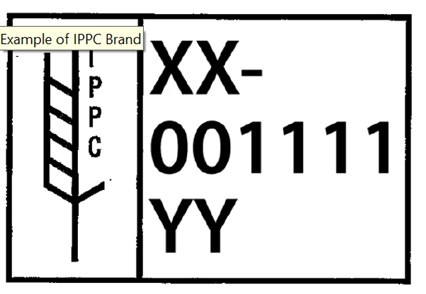Export Requirements for Mexico – Shell Eggs
June 02, 2014
- Export Procedures – In-Shell Pasteurized
- LP-210S Online Exhibit
- LP-210S Online Exhibit – 8 Production Lots
- Disease Free Statement (May 12, 2020) (pdf)
Ineligible Products
- Consult the Shell Egg Export Restrictions Dashboard prior to certifying any shipments.
- Nest run eggs for breaking facilities are ineligible.
Prerequisites
All Policy and General Procedures Requirements listed in General Export Certification must be met unless otherwise noted in this webpage.
Export Procedures Shell Eggs to Mexico, June 02, 2014
Purpose
This instruction outlines specific certification requirements for shell eggs as prescribed by Mexico.
General Procedures
Grade Requirements
The shell eggs processed under the supervision of the USDA grader must be graded and certified as U.S. Grade A or better as outlined in the United States Standards, Grades and Weight Classes for Shell Eggs (AMS 56).
Packaging/Packing
Wooden pallets, constructed with non-manufactured wood material, must be certified as treated in accordance with the ISPM-15, Phytosanitary Standard as a measure to reduce the risk of introduction or spread of insect larvae or pests and will be branded/stamped with the letters IPPC. Mexico regulation requires that the IPPC branding be legible, permanent, and placed in a visible place on at least two opposite sides of the pallet. 
Please Note: Manufactured wooden material, such as compressed particle board, plywood, and corrugated fiberboard are exempt from this standard.
- When IPPC certified pallets show evidence of repair(s), for example, new wood cross members, the pallet or treated wood must be re-certified and branded (IPPC). The original “IPPC” brand may be obliterated, and a new brand applied to the pallet. However, for verification purposes, plant management is responsible for maintaining certification documents for all non-manufactured wood material.
- Upon arrival at the processing facility, plant management is responsible for identifying and segregating the new materials, certified non-manufactured wood materials and/or pallets, and advising the USDA grader of the location of the certified materials to be used for export of table eggs to Mexico. The USDA grader will verify that the pallets are certified (IPPC brand on two sides of the pallet) prior to production of a shipment of eggs to be certified for export to Mexico.
Packing Case Labeling
- Each primary container and shipping container must be identified with the official plant name, number, date of packaging and lot code.
- Please refer to Exhibits VIII and IX, which illustrates the bilingual labeling requirements. The applicant is responsible for providing the appropriate language listed on the shipping case label. Any additional information placed on the shipping case label shall not intervene with the required labeling statements listed in the exhibits.
Certification
Each lot date of production must be documented as a separate row. For certificates covering more than five dates of production, two lines of information may be entered on a single row as shown in the exhibit below. For shipments to include more than ten days of production, it is recommended that two separate certificates including separate export stamp numbers be issued, or to contact the National Office (Shell Egg) for guidance.
When completing the certificate (Form LP-210S) the following information must be included:
- All dates recorded on the export documents must be typed in the Gregorian Format (day/month/year – DD/MM/YYYY).
- The net weight of the shipping case will be qualified with the number of individual eggs per case. For example,
- 30-dozen case = 360 eggs per case
- 15-dozen case = 180 eggs per case
When completing the certificate (Form LP-210S) the following information must be included in the remarks section:
- Company Seal Number
- Production/Packing Date(s)
- Expiration Date(s)
- The Lot Number shall be the consecutive day of the year, but the term” Julian Date” must not be referenced.
- Total Case count, expressed in 30dz equivalents
- Total net weight, including calculation.



